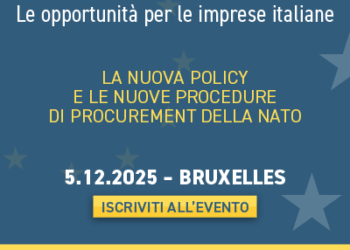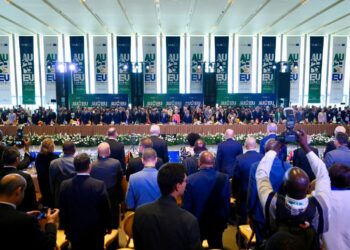Defense is a complex thing. Having guns matters, of course, but as a police friend who drove like a Formula One driver used to say: “The vehicle matters, but so does the driver.” Where is the European Union headed? Forget the debate, although absolutely valid, about whether to increase arms or try every possible path for dialogue; this is not the place for that discussion. The question is: the decision has been made to boost Europe’s (not just the EU’s) defensive military capabilities, but for what purposes? There is no defined goal beyond “deterrence” invoked by the president of the European Commission.
Diplomatic reasons and prudence prevent us from saying that Russia is the eventual enemy to defend against. Ursula von der Leyen never said it, even though it is clear that is what she thinks. Perhaps Russia is not the only concern we should have, but we must also consider other possible future threats. Beyond Ukraine, if the US backs down from defending Europe, we are without deterrence from any danger. Be it Russia, the US itself, or a reformed ISIS-type “informal” army. In fact, in Europe, we feel that we no longer have deterrence or adequate territorial defense, which are pretty basic. In addition, experts say that what we have is not interoperable without US military leadership and the NATO framework.
It has been decided to increase military spending and European capacity, “we have the means,” von der Leyen told the European Parliament today. And that’s fine; it’s true; Europeans have a solid base from which to build and finances that allow for increased spending. Then, considering that the Union’s economic growth has fallen close to zero percent, reviving manufacturing can be helpful to the recovery. Making weapons means investing in design and production, thus creating jobs. Some, like Italy, are trying to combine the approval of defense spending with job creation by hiring new soldiers. In short, there is an economic return.
However, the problem I see is that increasing spending does nothing to improve defense unless you identify the potential enemy and, therefore, the military defense needed. If the danger comes from the sea, you will need more ships; if it comes from land, more troops; if the enemy has a strong air force, you will need anti-aircraft; if the border with the risk zone is long, you will need major defensive infrastructure (certainly not a new Maginot line!). In short, it is essential to define the risk, then determine the level of risk, and thus structure a defense suitable for that risk. In the most immediate case, Bermuda shorts for the desert are probably unnecessary, but rather down jackets for the cold.
The issue is not what Italy is doing, according to which, if I understand it correctly, each state says how many tanks it needs, and then the best solution is found to produce them at the European level. It is right to coordinate production, but that would perhaps strengthen national armies, not European defense. For example, with the Russian threat, giving tanks to Portugal thousands of kilometers from the border is probably unnecessary, even though the Portuguese might want them.
Within the Ramstein format, The Contact Group for the Defense of Ukraine, of which 54 countries are members, Kyiv occasionally requests specific aid for specific military objectives. It must also be the method for the new EU defense: identify the need, define the means to address it, and invest accordingly. Otherwise, we risk inflating our muscles but throwing punches in the air.
English version by the Translation Service of Withub

![Il commissario per la Difesa, Andrius Kubilius [Bruxelles, 2 dicembre 2025. Foto: Emanuele Bonini]](https://www.eunews.it/wp-content/uploads/2025/12/kubilius-asd-350x250.png)








